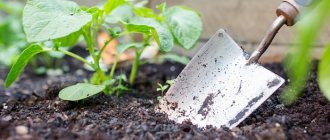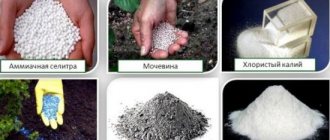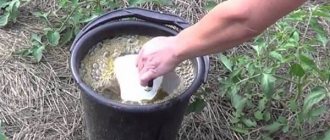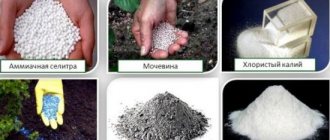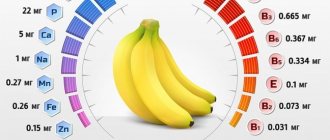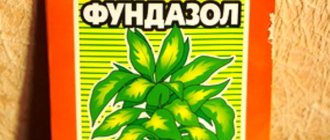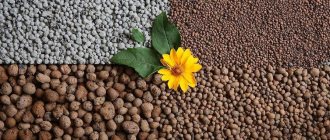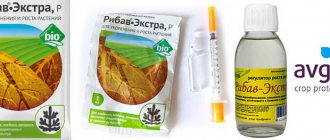581
Vermicompost is the best organic fertilizer, which has no analogues. This is an excellent growth stimulator without a single gram of chemicals. It has become popular among gardeners due to its rich range of beneficial properties and environmental friendliness. For ease of use, fermented and liquid types of vermicompost are available for sale, packaged in plastic bags or bottles of various sizes.
With the use of vermicompost, the yield increases by 30% or more
Liquid biohumus for the garden, seedlings and indoor plants is the primary fertilizer. It allows you to saturate the plantings not only with useful microelements, but also to stimulate the development of soil microflora. The instructions are simple and understandable to any gardener. This practical and practice-tested fertilizer, vermicompost, if desired, will not be difficult to make yourself.
Compound
The basis of vermicompost is:
- potassium from 0.7 to 1.2%;
- magnesium from 0.3 to 0.5%
- phosphorus 0.8 to 2%;
- nitrogen from 0.8 to 2%;
- calcium up to 3%.
Unlike mineral fertilizers, these elements are presented in an active water-soluble form.
Among the active components are fulvic and humic acids, which are involved in the processing of photon energy from the sun. The fertilizer also contains strains of nitrogen-fixing bacteria, microbial spores, amino acids, and phytohormones of natural origin.
Advantages
- Vermicompost is environmentally friendly.
- Humic acids are a natural antibiotic that protects seedlings and adult plants from microorganisms.
- A neutral acidity level is the prevention of plant diseases.
- A high concentration of beneficial bacteria (2 billion per 1 g) guarantees the neutralization of heavy metals and radionuclides contained in the soil.
- Vermicompost has a prolonged effect: it is applied once every 3-4 years.
- Vermicompost contains no pathogenic microorganisms or viable weed seeds.
- The use of vermicompost allows you to double the ripening of fruits without harm to plants and humans.
- Adding vermicompost neutralizes weed seeds.
- The content of E. coli in vermicompost is two times less than in manure.
drawback - the prepared solution quickly loses its beneficial properties. In its undiluted form, vermicompost retains its beneficial qualities throughout its use.
Vermicompost – indoor plants will thank you!
Most, as a rule, use ready-made complexes of chemicals: periodically pour in the whole cocktail of micro, macro and that’s it, it blooms and smells. As a result, we completely deplete the soil, which makes it simply unsuitable for natural growth and the plant lives only due to what we pour into it, like fertilizer.
The principle of hydroponics, where plants are kept without a substrate, only in a nutrient solution, or in glass wool, which retains the nutrient solution if there is no constant circulation of liquid.
Our choice is vermicompost. This is a natural organic fertilizer, which is the result of processing organic residues, in my case composts, by worms. The most powerful advantage is naturalness! Due to the fact that all elements are in the right proportion, in an easily digestible form, the plant develops naturally, using nutrition as efficiently as possible, consuming only what it needs at a particular moment.
Vermicompost is, so to speak, a living biota; there are microorganisms and beneficial bacteria there, which not only replenish, work as a generator: the plant absorbed some elements, the bacteria created them again, but also protect against diseases and infections that could get into the pot of water during watering.
Application
Vermicompost is suitable for any plants when grown in open ground. It is applied to the ground when preparing the soil mixture for seedlings, used to soak seeds before sowing, and also used as a regular liquid fertilizer.
The main purpose of vermicompost:
- improvement of agrotechnical qualities of soil;
- increasing the moisture-holding properties of the soil;
- acceleration of seed germination;
- activation of the formation of the root system;
- stimulating productivity;
- maintaining soil pH levels;
- increasing plant immunity;
- activation of the biological mass of plants;
- increased cellular respiration;
- increase in fruit biomass;
- neutralization of nitrates in fruits;
- stimulating flowering.
How is humus formed?
In nature, it is so customary that all living things, when they die, fall to the ground and enter the nutrient cycle. Organic residues, accumulating, form a surface layer, which is the source of energy for all representatives of the flora growing on the earth.
Due to their structural features, neither trees, shrubs, nor grasses are able to absorb organic matter directly. For growth and development, they require “processed food” - useful substances in the form of tiny particles that can be absorbed into the root system along with moisture. An innumerable number of little helpers are involved in the process of preparing a nutrient medium for plants. The fertile component is formed as a result of the activity of all living creatures living in the soil.
A huge variety of organisms live in the natural soil layer:
- bacteria
- mushrooms
- protozoa
- lichens
- insects
- invertebrates
According to scientists, in one year microorganisms with a total weight of about a ton are formed in every hectare of fertile soil layer! Each of these creatures has its own role. Each species chooses food based on its taste preferences, ultimately processing dead organic matter and turning it into new chemical compounds.
The smallest microorganisms begin the food chain by processing the most easily decomposed particles. Larger elements are consumed by bacteria and fungi, producing acids necessary for the process of forming more complex and more nutritious compounds.
The most important in the process of producing useful humus are undoubtedly annelids. Many species of these workers live in living, fertile soil. All of them, by eating decomposed organic remains, produce nutritious humus. In addition, by digging tunnels in the soil, worms perfectly mix the soil and loosen it, saturating it with moisture and oxygen.
[!] It was proposed to domesticate earthworms for the production of humus back in the mid-20th century.
The formation of a fertile layer nutritious for plants is a dynamic process. Complex organic compounds are constantly synthesized and decomposed, so the accumulation of the humus layer occurs unevenly and is highly dependent on environmental factors.
In warm and humid climates, the decomposition and processing of dying vegetation occurs very quickly and the humus layer does not have time to accumulate. In cold, harsh conditions, on the contrary, the formation of a nutrient medium is greatly slowed down, and the amount of raw materials in the form of dying organic matter is extremely small.
Optimal for the accumulation of biologically rich and fertile humus is a temperate climate without excess moisture. It is under such conditions that the most active accumulation of a massive layer of fertile soil occurs.
Form
In gardening stores, vermicompost fertilizer can be purchased in three forms:
- liquid;
- pasty;
- dry.
Liquid vermicompost for seedlings
The liquid form is a concentrate and is considered the most economical in terms of financial costs. The second name for liquid vermicompost tea is vermicompost tea. Liquid and paste forms are suitable for feeding garden plantings, as well as for indoor plants.
Important! Before using liquid vermicompost for seedlings, the solution must be kept warm for at least 4 hours!
| Fertilized crop | Fertilization scheme with liquid vermicompost |
| Vegetables (tomatoes, peppers, cucumbers, potatoes) | 100 ml per 10 liters of water. Fertilizer is applied once a week |
| Strawberries and other berries | 60 ml of humus per 10 liters of water – once a week |
| Houseplants | Feed 2 times a month with a solution at a concentration of 10-15 ml of vermicompost per 1 liter of water |
| Fruit crops | 250 ml of vermicompost per 10 liters of water – 2 times a month |
Dry vermicompost
The dry form is granules that resemble regular soil in appearance. Sold in bags of various packaging. The dry form is used when preparing the soil for planting during the process of digging up the ground.
Vermicompost for indoor plants: pour it in and forget it!
A simple example of using vermicompost for indoor plants. We gave an aloe vera sprout to my wife at work. The plant is extremely unpretentious, can survive in extreme conditions, and does not like peat. Together with my wife, my partner took a piece of the plant; it was planted at about the same time. I planted in pure vermicompost, my partner - as the Internet writes. Results: I’m rushing by leaps and bounds, my partner’s is gone.
I specially covered the small shoot completely, which is to the left in the photo, next to the main plant, so that it would disappear there, and it would just take it and grow.
So these are not cranberry seedlings, aloe does not like peat, you will notice, but vermicompost is peat and coprolites of worms. The point is that there is no peat left in its usual form after the worms, as such. They process it, turning it into a completely different material. That is why vermicompost is exclusively coprolites, even though the worms lived in peat.
No more feeding, no more fertilizing, water and replant when needed, or cut crops like mint or rosemary. For watering, as I already said, I do not use water, but chlorella, because I have a lot of it, the benefits for plants are significant, and it definitely won’t get any worse.
Crop susceptibility
Vermicompost is considered the main fertilizer for gardening work. Moreover, the susceptibility of crops to it depends on the type of plant.
Highly responsive plants (60-70%):
- all root vegetables;
- plants of the Solanaceae family;
- pumpkin crops;
- cereals;
- fruit trees.
Plants of medium and low level of susceptibility (20-30%):
- legumes;
- Maslenitsa
What is liquid vermicompost and how is fertilizer used in crop production?
Since we are talking about an environmentally friendly organic fertilizer, even its regular use does not pose any threat, both to the soil and to the crops grown on it. But there are really a lot of benefits from such an additive, since vermicompost is a whole complex of useful substances, including natural antibiotics, vitamins, minerals and growth stimulants, ensuring full development and active budding/fruiting.
And if we carry out a comparative analysis, then vermicompost greatly benefits from manure or compost, including 4-8 times more nutritious organic substances in its composition, you can see what the practical use of the additive on the site will help. And what is noteworthy is that there is no human merit in ensuring this effect, since this time everything is done instead by worms, and not ordinary earthworms, but Californian red ones. It is these soil orderlies who process the remains of organic matter, releasing such a specific product as coprolites, which are the best food for plants.
And if someone is afraid of this origin of vermicompost, then all these fears and doubts should be immediately dispelled, since the processing does not contain parasite eggs, pathogenic bacteria and weeds, so its use is completely safe. Moreover, the substance itself is similar to soil, having the same pronounced earthy smell and color.
Among other features, it is worth noting the high compatibility of vermicompost with almost any other fertilizer of organic origin, which allows you to obtain the most effective result.
In addition, experts have noted that the timely use of such organic matter promotes the germination of seeds, which initially contain a mechanism blocking this process, strengthens the plant immune system, ensures more luxuriant flowering and accelerates the ripening of fruits. Regular application to the soil counteracts the accumulation of nitrates and other harmful substances in plants, and it is almost impossible to overfeed the soil with this composition (at least if a pure preparation is used).
Using pure concentrate can cause burns on the fragile root system
Terms of use
The dry form of fertilizer is applied to the soil while preparing the land for gardening. The norm is 1:2 (vermicompost:soil). Dry fertilizer can be used in its pure form for planting seedlings.
At the stage of preparing seeds for sowing, they are soaked in a solution of vermicompost at a rate of 1:20 (fertilizer:water). Soaking time depends on the crop:
- onions and potatoes – 30-40 minutes;
- carrots – up to 2 hours;
- legumes – up to 6 hours;
- radishes and greens – up to 12 hours;
- cucumbers – 12 hours;
- most vegetables – up to 24 hours:
- melons – up to 24 hours.
After the emergence of seedlings at the formation stage, 3-4 pairs of true leaves begin feeding the seedlings. The interval between feedings should be at least 2 weeks. Calculation – 5 ml of vermicompost per 1 liter of water.
During picking, it is recommended to use a dry form of fertilizer. As a standard, take 1-2 handfuls of vermicompost for each cup (comb).
Tomatoes require more fertilizer than other crops . When transferring seedlings to planting holes, add 0.5 kg of vermicompost to the bottom. As a percentage, vermicompost should be 20% of the total volume of soil in the planting hole.
Cucumbers are also planted in a layer of worm compost up to 2-3 cm thick. Liquid vermicompost is diluted in a ratio of 1:50. Beds with cucumbers can be mulched with dry vermicompost (layer up to 2 cm). Cabbage and sweet pepper seedlings do not require such thorough preparation, so vermicompost is added only at the soil preparation stage.
When planting potatoes , take 200 g of dry fertilizer per hole. When preparing the land for sowing winter crops, the top layer of soil is also mixed with vermicompost at the rate of 700 g of fertilizer per square meter of land.
For foliar spraying, the fertilizer is diluted in a ratio of 1:200. Spraying is carried out once every two weeks at the stage of growing green mass.
Using vermicompost indoors
When growing seedlings indoors, only liquid form of fertilizer is used. Organic matter in the form of granules is a breeding ground for the development of midges. If it is impossible to use liquid fertilizers, an extract (vermicompost tea) is made from dry mixtures at the rate of 1 cup of dry mixture per 5 liters of water. The composition is infused for 24 hours.
A simple method of using vermicompost for indoor plants
In the process of growing garden crops, tomatoes, cucumbers, zucchini and others, in beds, in a word, vermicompost is added as fertilizer, in certain proportions. This is primarily due to economic feasibility, because plant roots penetrate up to 1 meter into the soil, and using only vermicompost instead of soil is extremely expensive.
Secondly, vermicompost renews depleted soil due to the fact that those bacteria and microorganisms that live in it actively develop. Of course, you shouldn’t forget about the pH preferences of certain plants; some like sour, others neutral.
Place expanded clay or a small layer of sand on the bottom of the pot; it’s worse to work with sand when replanting; if there are drainage holes, store-bought soil and vermicompost, you can safely use 20% vermicompost. The substrate does not dry out, water does not stagnate, it breathes, a huge amount of available nutrients, protection against diseases, prolonged effect.
We recommend reading Technology for the production of vermicompost.
Price and storage conditions
A liquid concentrate is produced to care for seedlings. The average cost of one 250 ml bottle is 80 rubles. The price depends on the concentration of active components. When purchasing fertilizers, choose formulations designed for a specific type of vegetable crop.
The concentrate is stored in a cool, dry place away from direct sunlight. After freezing, vermicompost does not lose its properties. Maximum storage time is 1.5 years. After the expiration date, the digestibility of substances decreases.
Features of the production of high-quality vermicompost in the country
To prepare vermicompost yourself, you will need special worms and organic waste. Algorithm of actions:
- Prepare a hole where the compost will be mixed. Instead of a pit, you can take a box made of plastic or wood with holes in the bottom.
- Fill the container with organic waste (silage, manure, leaves, humus, etc.).
- Add a little lime and peat (200 g per 1 kg of compost).
- Mix the ingredients and leave for five days. Every two days, water the mixture with warm water. The initial stage of fermentation is accompanied by heating the mixture to 40–50 °C. After five days the temperature will drop to 25 °C.
- Buy red Californian worms at a rate of 700–1000 pcs. per 1 cu. m organics. Release the worms into the container on the seventh day.
- Cover the mixture with a cloth to protect from sunlight. If a box is used, place a container underneath to collect liquid.
- For several weeks, the worms will actively reproduce, processing the compost.
- When the number of worms increases greatly, the top part of the compost should be removed, and the bottom should be sifted and dried. The bottom layer is the finished vermicompost.
- The top layer should be replenished every ten days with fresh organic matter so that the worms have food.
The process of making vermicompost takes up to four months. During this time, 1500 worms will produce two tons of vermicompost.
Checking vermicompost
Dry vermicompost should contain coprolite granules that remain dense and do not crumble after physical impact.
Vermicompost, unlike peat mixture, quickly settles to the bottom of a container of water. You can roll a small ball from dry vermicompost. This cannot be done from ordinary soil.
Liquid or dry vermicompost: which is better?
Vermicompost is a kind of delicacy for vegetation, which has no analogues in terms of productivity. This is not only suitable starting nutrition, stimulating growth, but also strengthening the immunity of any crop.
The fertilizer comes on sale in two formats:
- Dry (fermented) is a loose, well-granulated black-brown product of worm processing. It goes on sale in plastic bags with a volume of 1 liter and above. Five-liter packages are convenient for fertilizing indoor flowers and seedlings. Bags with a volume of 25 liters are used to feed ¼ weave.
Application rate of dry vermicompost - Liquid is a universal extract obtained from fermented vermicompost. It is sold as a black-brown liquid, gel or thick paste. Gel-like fertilizer with a volume of 0.5 liters is often purchased for indoor and greenhouse perennials and seedlings.
Neither dry nor liquid vermicompost leads to overdoses and burns of plants.
In terms of usefulness for plants, there is no significant difference between fermented and liquid vermicompost. The choice of a particular product depends on the purpose of use. For example, if it is necessary to improve the structure of the soil, then it is more advisable to purchase dry products. The fermented composition helps make the soil looser and more breathable.
How to distinguish a fake?
To get the maximum benefit from fertilizer, it is important to choose a quality product. Often counterfeit products go on sale. Therefore, when purchasing, you should consider several criteria:
- Dry vermicompost has not only a crumbly structure, it is also well granulated. Before packaging in plastic bags, the fertilizer is dried and separated. The granules obtained during the sifting process do not lose their shape for a long time. Thanks to the adhesive mucus secreted by the worms during processing, the fertilizer particles acquire a durable, breathable structure.
- Upon careful examination, the composition may contain remains of cocoons or small dried worms.
Fermented vermicompost - The quality of the product can be checked experimentally: place a handful of vermicompost into a container of water. The liquid should remain clear. In the presence of peat or compost, it immediately becomes cloudy.
1 kg of dry vermicompost is approximately equal to 2 liters of liquid.
High-quality products are offered by IP Tkachenko, and Travart, the Russian-Indian enterprise Ecoharvest and others. Since 2022, Natural Organics has been supplying its products to the market, and it is also engaged in breeding earthworms.

